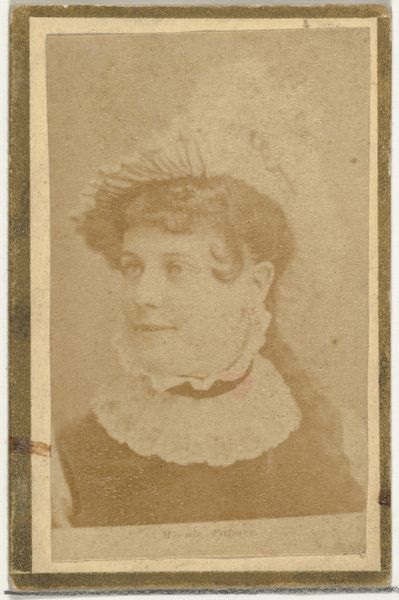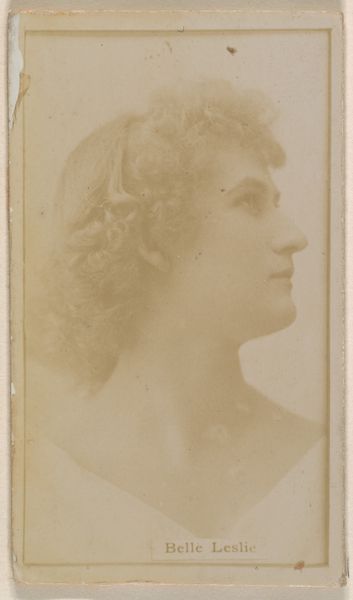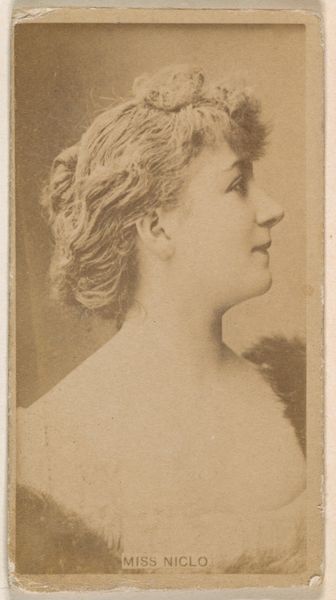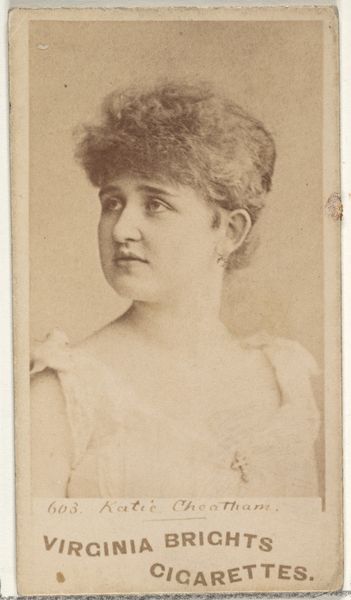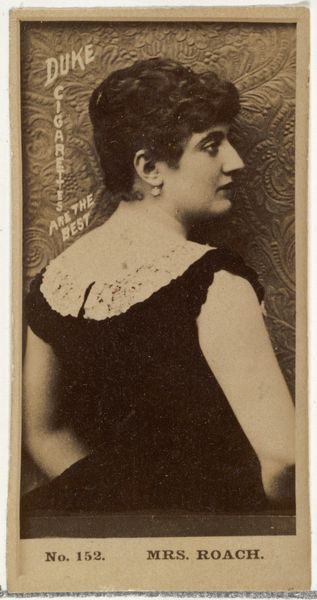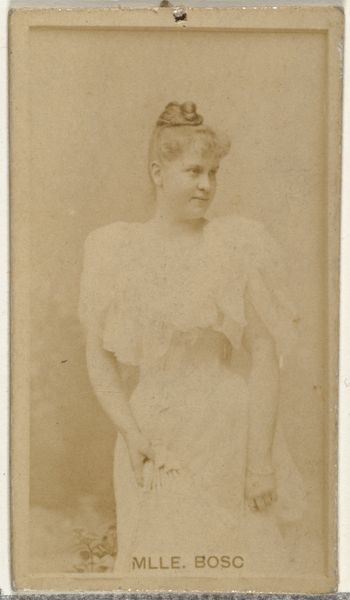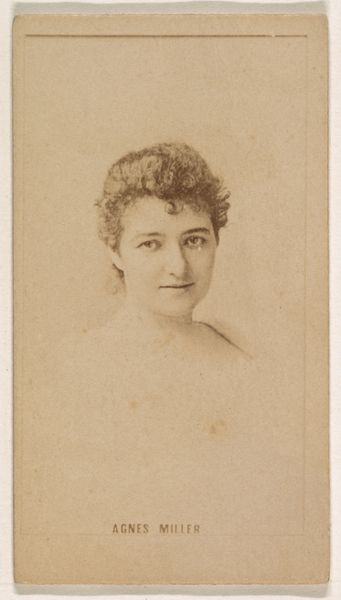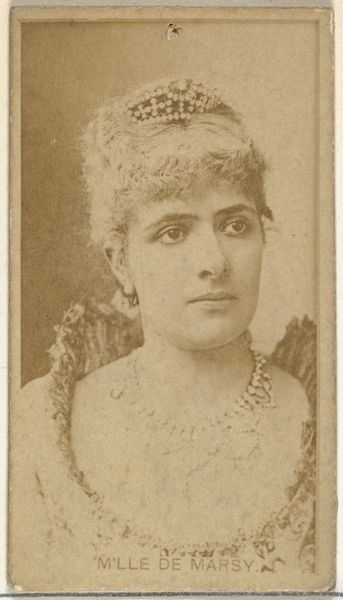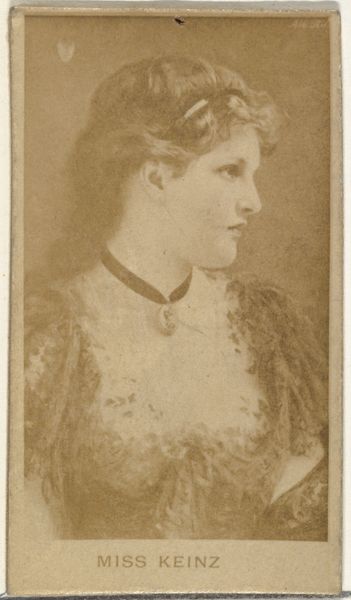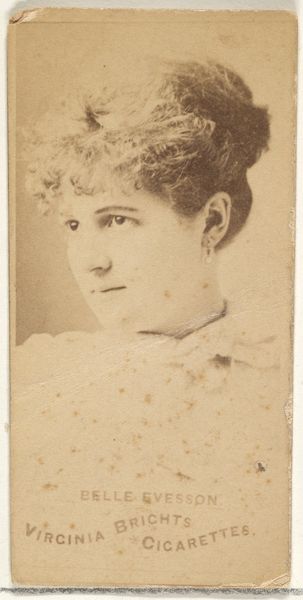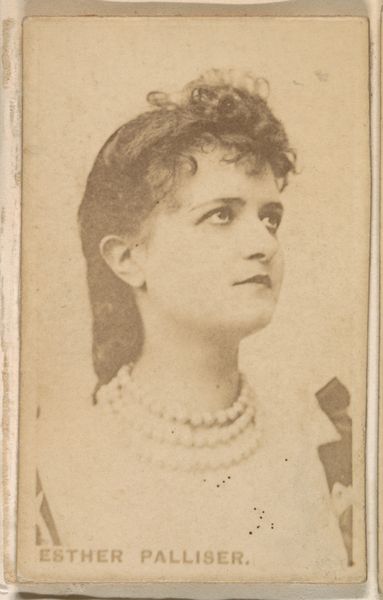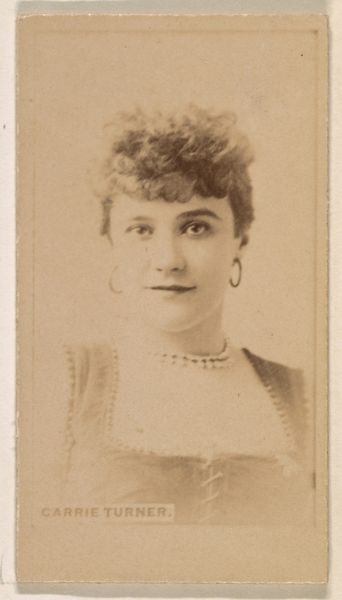
Hattie Stewart, Champion Female Boxer of the World, from the Champions of Games and Sports series (N184, Type 2) issued by W.S. Kimball & Co. 1887
0:00
0:00
drawing, print
#
drawing
# print
#
oil painting
#
portrait reference
#
coloured pencil
#
coffee painting
#
men
#
animal drawing portrait
#
portrait drawing
#
watercolour illustration
#
athlete
#
portrait art
#
watercolor
#
fine art portrait
Dimensions: Sheet: 2 11/16 × 1 1/2 in. (6.8 × 3.8 cm)
Copyright: Public Domain
Editor: This is a print from 1887 by W.S. Kimball & Co. titled "Hattie Stewart, Champion Female Boxer of the World." It's interesting how they depicted her portrait above a scene of her actually boxing. What do you see in this piece from a historical perspective? Curator: I see a fascinating intersection of gender, sport, and visual culture. Consider the historical context: in the late 19th century, women's participation in sports, especially boxing, was both a spectacle and a challenge to prevailing gender norms. This print, produced as a trade card, reveals how Hattie Stewart was simultaneously celebrated and commodified. Editor: Commodifed? How so? Curator: Trade cards were essentially advertising. By associating her image with their brand, Kimball & Co. leveraged Hattie Stewart’s fame, reinforcing consumer culture while also, perhaps inadvertently, promoting female athleticism. Think about the implied power dynamic of display, then and now. How might this image be viewed in terms of contemporary debates surrounding representation? Editor: So, it’s not just about the image itself, but also how it circulated and what it meant to the public at that time. I guess I hadn't considered it beyond a simple portrait. Curator: Precisely. Consider the very act of distribution and how it shaped perception. These cards reached a broad audience, making Stewart a recognizable figure. This accessibility is vital to understanding the public role of art, and, indeed, this very image's own politics. What are your thoughts now about its visual and cultural impact? Editor: It definitely makes me think more critically about how images, even seemingly simple ones like this, can carry complex social messages and reflect shifting societal values. Curator: Agreed, and that’s how even a small piece of printed matter can open up broader discussions about our history.
Comments
No comments
Be the first to comment and join the conversation on the ultimate creative platform.

